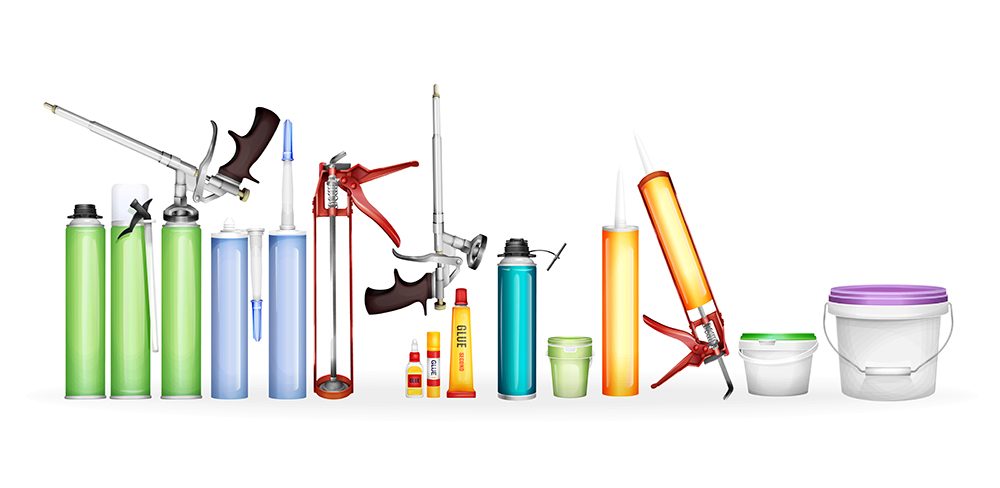Aluminum caulking tubes solve the anti-leakage, corrosion resistance, and environmental protection needs of silicone sealant packaging through material science innovation and precision manufacturing processes. With the global emphasis on lightweight and recyclable materials, aluminum tubes will continue to dominate in construction, automobiles, and medical care. In the future, the industry needs to further optimize its carbon footprint, develop innovative packaging solutions, and consolidate its technological moat as the gold standard.
1. Core technical advantages of aluminum caulking tubes
1. Unparalleled sealing and corrosion resistance
Aluminum caulking tubes are made of aluminum ingots with a purity of 99.7%. A dense protective layer is formed through an internal spraying process, and double sealing is achieved with the tail glue process, which can completely isolate oxygen and water vapor. Experiments show that the oxidation inhibition efficiency of aluminum tubes on silicone sealants is 98%, which is significantly better than plastic or composite packaging. For example, in extreme acid and alkaline environments (pH 2-12), aluminum tubes can still maintain structural integrity and prevent leakage or deterioration of contents.
2. Perfect balance of lightweight and high-barrier properties
Aluminum has a density of only 2.7g/cm³ but can withstand an extrusion strength of up to 50MPa. Its natural barrier properties can block 99.9% of ultraviolet rays, oxygen, and moisture, extending the shelf life of silicone sealants to more than 18 months. For example, the 13.5mm diameter aluminum tube is specially designed for high-viscosity caulking agents. It is light, easy to use, and not easy to deform. It is suitable for precision construction scenes such as construction and automobiles.
3. Customized design and functional expansion potential
The surface of the aluminum tube supports four-color offset printing, hot stamping, Braille tactile labeling, and other processes to meet brand identification and functional requirements. For example, the 3D digital printing technology of Hongzhi hose can achieve a three-dimensional relief effect on the surface of the aluminum tube to enhance product recognition; the three-point tube/five-point tube design provides tactile warnings for visually impaired users, reflecting the inclusive design concept.
2. Production process: precision control from raw materials to finished products
The manufacturing process of aluminum caulking tubes includes five key links:
- Raw material screening and pretreatment: high-purity aluminum ingots are smelted to form a homogeneous alloy to ensure the tube wall thickness error is ≤0.05mm.
- Extrusion molding and cooling shaping: hot extrusion into tube billets through molds, rapid cooling system to avoid lattice defects and improve mechanical strength.
- Welding and sealing reinforcement: TIG welding technology is used to achieve seamless docking, and the internal spray epoxy resin layer can resist the chemical erosion of silicone solvents.
- Surface treatment and printing adaptation: The primer coating enhances the ink’s adhesion, and the offset printing process supports Pantone color restoration with an accuracy of ±0.1mm.
- Fully automatic quality inspection system: through laser diameter gauges, helium mass spectrometers, and other equipment, ensure that the qualified rate of finished products is ≥99.8%.
3. Application scenarios: the gold standard for cross-industry verification
1. Construction and automobile manufacturing
In sealing building curtain walls, aluminum caulking tubes can withstand temperature differences from -40℃ to 120℃, avoiding cracking problems caused by silicone’s thermal expansion and contraction. The automotive industry relies on its oil resistance. For example, a car company uses silicone sealants packaged in aluminum tubes to increase the life of the body seams by 30%.
2. Daily chemicals and medical fields
Aluminum-plastic composite tubes have passed FDA certification and are used for medical silicone sealant packaging. They have a bacteria-blocking rate of up to 99.99%. Some cosmetics manufacturers (such as L’Oreal) use aluminum tubes to package anti-oxidation essence silicone, and the shelf life is extended to 24 months.
3. Special environment solutions
In salt spray environments such as offshore platforms, the anodized coating of aluminum tubes can resist Cl⁻ ion corrosion. Comparative tests show that its salt spray resistance time exceeds 3,000 hours, which is 3 times that of galvanized steel pipes.
4. Industry trends: sustainability and technological iteration
1. Material upgrade is driven by environmental protection
The global aluminum tube recycling rate has reached 75%, and a new type of all-plastic high-barrier sheet (PBL) is under development to achieve 100% recyclability. The EU REACH regulation requires companies to adopt water-based internal spraying technology to reduce VOC emissions by 90%.
2. Intelligent and customized innovation
Hongzhi Hose and other companies have introduced AI quality inspection systems, and the accuracy of defect identification has increased to 99.5%; on-demand customization services support a minimum order quantity of 5,000 pieces, and the delivery cycle is shortened to 7 days.
3. Challenges and coping strategies
In 2024, the price of aluminum will fluctuate by 20%, and manufacturers will control costs through futures hedging and lightweight design (10% thinning of the tube wall). Customized orders need to balance mold development costs, and it is recommended that modular designs be used to reduce marginal costs.
Các câu hỏi thường gặp:
Q1: What are the core advantages of aluminum caulking tubes over plastic packaging?
A: Aluminum tubes have higher barrier properties (oxygen permeability <0.01cc/m²/day), a wide temperature range (-40℃~120℃), and are completely recyclable, with environmental performance far exceeding that of plastics.
Q2: How do aluminum caulking tubes prevent silicone sealants from curing?
A: The internal spray epoxy resin layer isolates the aluminum from contact with the silicone, and the nitrogen-filling process improves the stability of the contents by 90%.
Q3: Does the aluminum caulking tube meet food-grade standards?
A: Aluminum tubes certified by FDA and EU 10/2011 can be used in food contact scenarios, and a solvent-free internal coating process must be selected.
Q4: Is the cost of custom aluminum tubes too high?
A: The modular design supports fast mold change, and the unit price of 5,000 pieces is close to that of standard tubes, which is suitable for small and medium-sized batches of high-end brands.
Q5: How to deal with discarded aluminum caulking tubes?
A: Aluminum can be recycled infinitely. It is recommended that it be processed through municipal metal recycling channels. Recycling uses only 5% of the original aluminum production’s energy.


